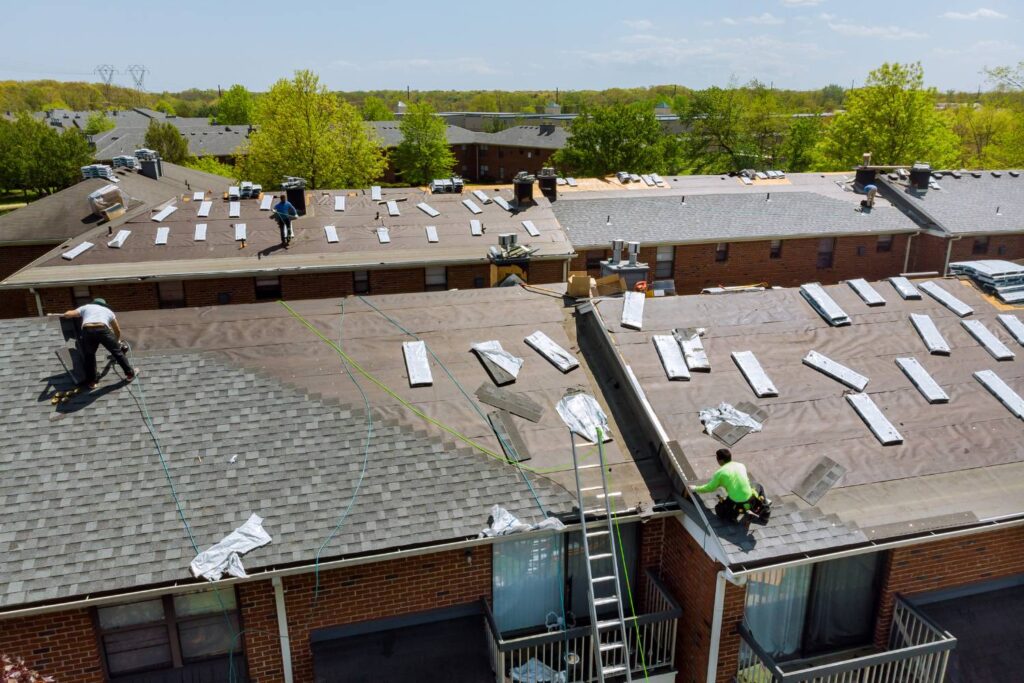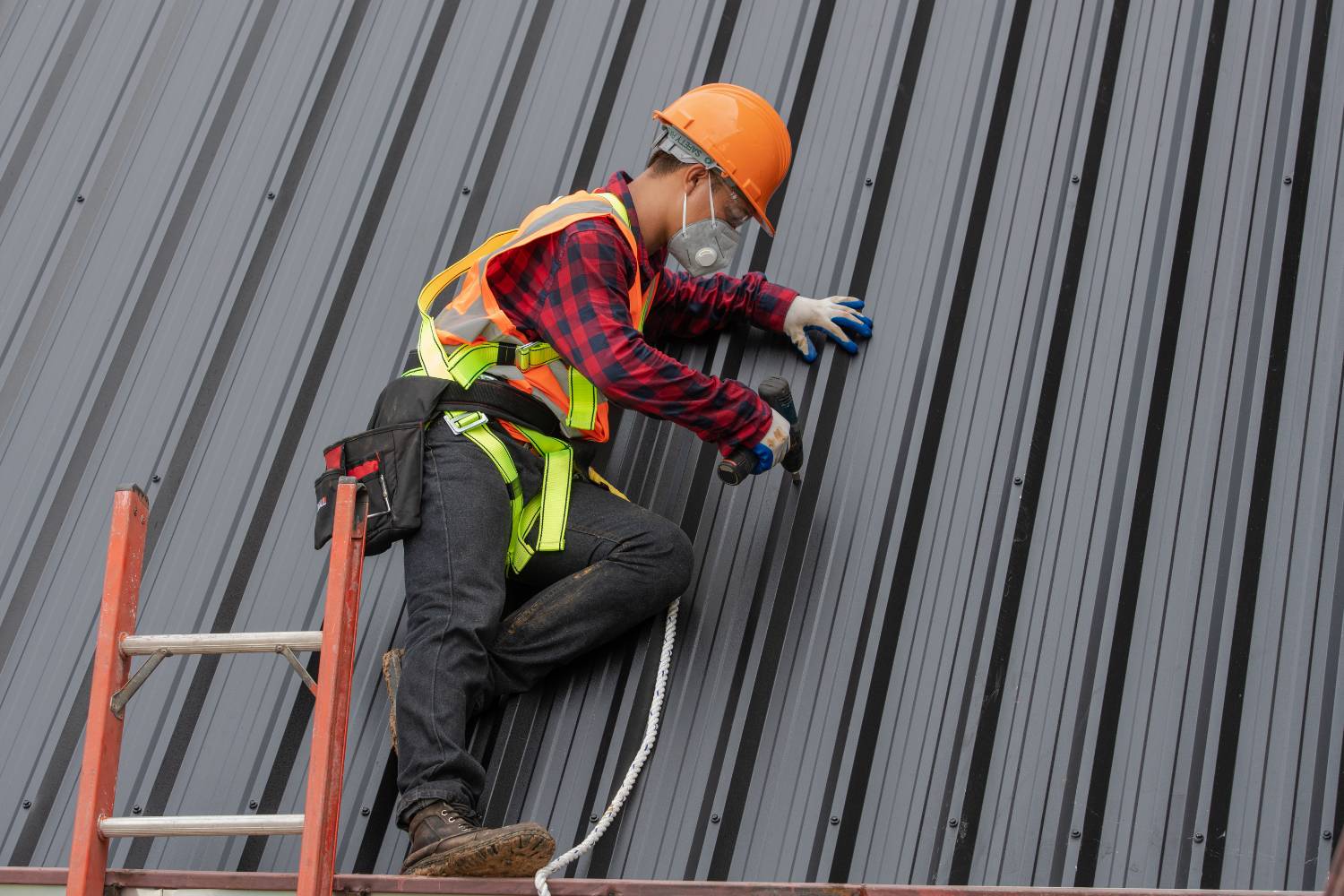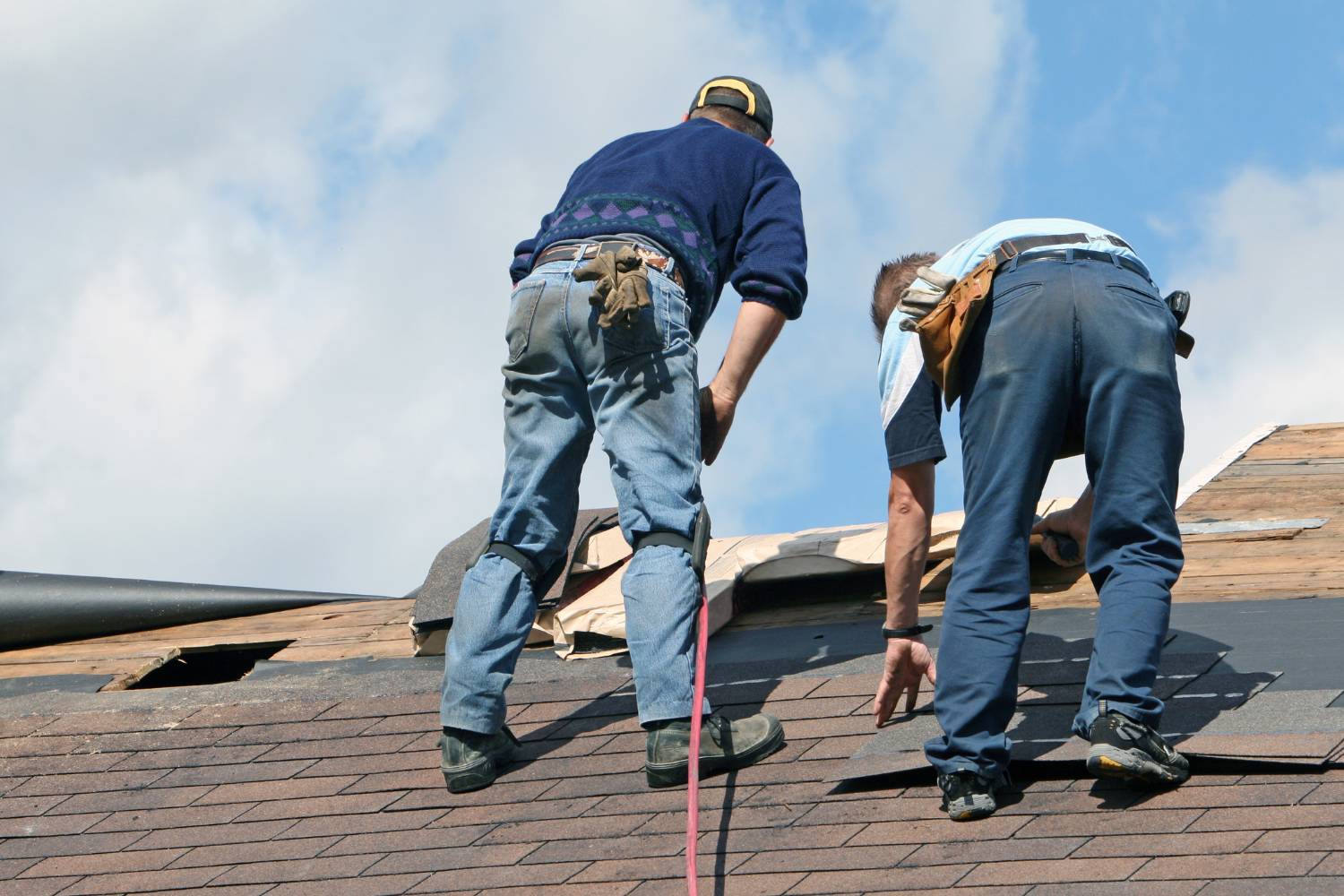As a homeowner, maintaining your roof is one of the most critical tasks you can undertake to protect your investment. Your roof shields you from the elements and, over time, it may show signs of wear and tear that necessitate attention.
In this blog, we'll walk you through the entire roof restoration process, from identifying when your roof needs restoration to the final steps of maintaining a newly restored roof.
How Do I Know If My Roof Needs Restoration?
Owning a home involves regular maintenance, and one of the most crucial parts to keep an eye on is the roof. Your roof protects you from the elements, and over time, it can show signs of wear and tear. Knowing when your roof needs restoration can save you from more significant, costlier problems down the line. Here are some key signs that indicate your roof might need restoration.
Cracked Or Missing Roof Tiles
Cracked or loose roof tiles can result from weather exposure, dirt, debris, or even small animals. These cracks can lead to internal leaks, causing water damage and potential structural issues. Missing tiles are also a clear sign of damage. If tiles are missing, it can lead to leaks and further deterioration if not promptly replaced. Addressing these issues early can prevent more extensive damage.
Internal Or Ceiling Leaks
Visible damage such as dark spots, bubbling, or bulging on your ceiling are indicators of internal leaks. Wet patches, stains, and even puddles on the floor are signs that water is entering through the roof. This water damage can affect wooden beams, insulation, plaster, and even electrical wiring, posing significant safety hazards. If you notice any of these signs, it's crucial to address the leaks promptly to prevent further damage.
Roof Colour Fading
A faded roof colour is a clear sign that the protective coating is wearing off, leaving the roof susceptible to damage. While regular cleaning can help maintain the roof's appearance, significant fading suggests that it's time for a professional assessment. A faded roof not only indicates potential structural issues but also reduces your home's curb appeal and overall value.
Water Damage
Moisture trails, dark spots, and mould inside your home are telltale signs of water damage originating from the roof. These issues can lead to rot and significant structural problems if not addressed promptly. When water damage is detected, immediate action is necessary to prevent further leaks and restore the roof to its original condition.
Roof Age
The average lifespan of most roofs ranges from 20 to 50 years, depending on the material. Older roofs are naturally more prone to damage and might need restoration to extend their lifespan. Signs of aging include expanding walls, blistering paint, and bubbling wallpaper, all of which indicate that your roof's integrity is compromised due to age.
Corrosion Or Rust
Corrosion or rust on metal roofs indicates moisture problems, particularly in older roofs or those in coastal areas. Corrosion compromises the roof's protective capabilities and can lead to further damage if not addressed. A professional assessment is necessary to handle rust removal and ensure the roof is thoroughly cleaned and protected against future corrosion.
Sagging Roof
A sagging roof is a severe sign of structural damage. It could be due to a weakened roof structure or external damage from weather conditions. If you notice any sagging, it's crucial to have a professional inspect the roof to determine the cause and necessary repairs. Addressing a sagging roof promptly can prevent further structural issues.
What Should I Do Before Starting A Roof Restoration?
Embarking on a roof restoration project is a significant undertaking that requires careful planning and preparation. Ensuring that you have addressed all necessary considerations before starting can make the process smoother and more successful. Here are the key steps to take before beginning your roof restoration.
Assess Your Roof Type
Understanding the type of roof you have is crucial, as different materials require different restoration methods. Common roof types in Australia include gable roofs, hip roofs, flat roofs, skillion roofs, and curved roofs.
Each type has unique characteristics and needs. For instance, metal roofs and tiled roofs have different maintenance and restoration requirements. Identifying your roof type helps in selecting the appropriate materials and techniques for restoration.
Consider The Climate
The climate in your area significantly impacts the materials and methods used in roof restoration. In tropical climates, roofs face high humidity and heavy rainfall, necessitating materials that resist corrosion and promote good ventilation.
Arid climates require materials that can withstand strong UV radiation and high temperatures. Coastal areas need roofing materials that resist salt spray and high winds. Understanding your local climate ensures that you choose durable and suitable materials for your roof.
Plan The Timing
Choosing the right time for your roof restoration is essential. Avoid scheduling the project during rainy or windy seasons to prevent weather-related delays and complications. Consider local weather patterns and plan your restoration during a period with stable and favourable weather conditions. Proper timing helps ensure a smooth restoration process and high-quality results.
Choose A Reputable Roofing Contractor
Selecting the right roofing contractor is critical for the success of your roof restoration. Look for contractors with experience, proper licensing, and insurance. Check their references and online reviews to gauge their reputation and quality of work.
Obtain detailed quotes from multiple contractors, including a breakdown of costs, scope of work, timeline, and warranty information. A reliable contractor should communicate clearly and regularly, providing you with updates and addressing any concerns promptly.
Set A Realistic Budget
Roof restoration can be expensive, so it's important to set a realistic budget. Consider all potential costs, including materials, labour, permits, and any unforeseen expenses. Adding a buffer of about 10% to your budget can help cover unexpected costs. Understanding the financial aspects of the project ensures that you are prepared and can avoid financial strain during the restoration.
Inspect And Prepare Your Roof
Before starting the restoration, conduct a thorough inspection of your roof to identify any existing issues such as leaks, cracks, or damaged tiles. Addressing these problems beforehand can prevent further damage and ensure a smoother restoration process. Additionally, ensure your roof has adequate insulation and ventilation to improve energy efficiency and prolong the roof's lifespan.
How Is The Roof Inspection And Assessment Conducted?
Conducting a roof inspection is a vital part of maintaining the integrity and longevity of your home. A thorough inspection can identify potential issues before they become significant problems, saving you time and money in the long run. Here’s a detailed guide on how roof inspections and assessments are conducted.
What Is A Roof Inspection?
A roof inspection is a comprehensive examination of a roof's condition performed by a professional. The inspection involves evaluating the roof's structure, materials, and related components to determine its overall health and identify any areas that need repair or replacement. The findings are documented in a report that details the roof’s condition, highlighting any minor or major issues that should be addressed.
Why And When To Get A Roof Inspection
Roof inspections are essential for several reasons:
- After Severe Weather: Heavy downpours, hail, strong winds, or snow can cause damage that isn't always immediately visible. Regular inspections after such events can catch problems early.
- Routine Maintenance: Scheduling an annual roof inspection can help catch issues before they escalate, much like a yearly physical exam.
- Home Renovations: Before starting major renovations that involve the roof, an inspection can determine whether to replace the entire roof or integrate the addition with the existing roof.
- Real Estate Transactions: Inspections are crucial for buyers and sellers to ensure the roof is in good condition and to avoid surprises post-sale.
Who Performs Roof Inspections?
Roof inspections can be conducted by:
- Roofing Contractors: These professionals specialise in roof repairs and replacements and often provide inspection services.
- Roof Inspectors: Certified inspectors focus solely on evaluating roofs and providing detailed reports.
- Home Inspectors: They inspect the overall condition of a home, including the roof, often as part of a real estate transaction.
For accurate and thorough results, especially for insurance claims or real estate transactions, it’s best to hire a certified roof inspector or a reputable roofing contractor.
What Happens During Roof Cleaning And Preparation?
Roof cleaning and preparation are essential steps in maintaining and restoring the integrity and longevity of your roof. A thorough cleaning process not only enhances the roof's appearance but also ensures that it is ready for any subsequent repairs or restorations. Here’s a detailed guide on what happens during roof cleaning and preparation.
Initial Preparations
Before starting the roof cleaning process, several preparations are necessary to ensure a smooth and efficient operation:
- Site Inspection: The roofing crew will conduct a comprehensive inspection of the roof to identify any existing damage, structural concerns, and specific areas that need attention. This helps in planning the cleaning process and addressing any underlying issues.
- Material Delivery: All necessary materials, such as cleaning agents, tools, and safety equipment, are delivered to the site to ensure everything is ready for the cleaning process.
- Protection of Property: To safeguard your property, the crew will cover windows, landscaping, and any outdoor furniture with tarps or protective coverings to prevent damage from falling debris or cleaning agents.
Cleaning Process
The actual cleaning process involves several critical steps to ensure the roof is free from dirt, moss, algae, and other contaminants:
- Debris Removal: The first step is to remove any large debris, such as leaves, branches, and dirt, from the roof surface. This is typically done using brooms or leaf blowers.
- Pressure Washing: The roof is then pressure washed to remove moss, lichen, algae, and dirt. The pressure is adjusted based on the type of roofing material to avoid damage. For example, lower pressure is used on delicate tiles, while higher pressure may be applied to more durable surfaces.
- Gutter and Downpipe Cleaning: After washing the roof, the gutters and downpipes are cleaned to ensure proper drainage. This involves removing any accumulated debris that could cause clogs and lead to water damage.
What Are The Final Steps In A Roof Restoration Project?
Roof restoration is a comprehensive process that extends the life of your roof, enhances its appearance, and ensures it provides optimal protection for your home. The final steps of a roof restoration project are crucial for securing the results and guaranteeing long-term benefits. Here’s a detailed look at what happens during these final stages.
Roof Inspection And Assessment
The process begins with a thorough inspection and assessment of the roof. A professional roofing contractor will evaluate the condition of the roof to identify any underlying issues and determine the extent of the necessary repairs. This includes examining the roof for leaks, cracks, damaged tiles, and structural issues. The assessment helps in creating a detailed plan and scope of work for the restoration project.
How Do I Maintain My Restored Roof?
Maintaining a restored roof is crucial to ensure its longevity and the continued protection of your home. Here are some comprehensive tips to help you keep your roof in excellent condition:
Regular Inspections
- Frequency: Schedule regular roof inspections at least once a year, particularly after significant weather events like storms.
- Professional Help: Engage a professional roofing contractor to identify and address potential issues early.
Keep Gutters Clean
- Prevent Water Buildup: Clean gutters and downpipes regularly to prevent water from pooling on the roof.
- Seasonal Maintenance: Pay special attention during autumn when leaves and debris are more likely to accumulate.
Trim Overhanging Trees
- Reduce Damage Risks: Trim branches hanging over your roof to prevent damage from falling leaves, twigs, and branches.
- Avoid Wear: Prevent branches from rubbing against the roof, which can wear away protective coatings.
Address Leaks Promptly
- Early Detection: Look for signs of water leaks such as ceiling stains or damp spots on walls.
- Immediate Action: Address leaks immediately to prevent further damage and costly repairs.
Conclusion
Maintaining your roof is crucial for protecting your home and preserving its value. This guide has covered the essential steps for successful roof restoration, from identifying signs of damage like cracked tiles and internal leaks to preparing for restoration by assessing roof type and climate.
Choosing a reputable contractor and setting a realistic budget are vital for quality restoration. Regular inspections, cleaning, and timely repairs are key to maintaining your restored roof. Keeping gutters clean, trimming overhanging trees, and addressing leaks promptly will extend your roof's lifespan.
A well-maintained roof enhances curb appeal and ensures your home is safe from the elements. With proactive maintenance, your roof will remain strong and durable for years to come. Thank you for reading, and we hope this guide has been helpful in your roof restoration journey.
Frequently Asked Questions
Several signs indicate that your roof might need restoration. Look for cracked or missing tiles, dark spots or bulging on your ceiling, water stains, and mould inside your home. Faded roof colour and visible rust or corrosion on metal roofs are also indicators. Additionally, if your roof is over 20 years old, it may be more susceptible to damage and in need of restoration.
Before beginning a roof restoration, assess your roof type and consider your local climate to choose suitable materials. Plan the timing of the project to avoid adverse weather conditions. Select a reputable roofing contractor by checking references, licences, and reviews. Set a realistic budget that includes a buffer for unexpected costs. Finally, a thorough inspection must be conducted to identify and address existing issues.
It is recommended to have your roof inspected at least once a year. Additionally, inspections should be conducted after severe weather events such as heavy rain, hail, or strong winds. Regular inspections can help identify potential problems early, preventing more extensive damage and costly repairs.
Roof cleaning involves several steps: removing large debris like leaves and branches, pressure washing to eliminate moss, lichen, algae, and dirt, and cleaning gutters and downpipes to ensure proper drainage. The pressure used during washing is adjusted based on the roofing material to avoid damage. Proper cleaning prepares the roof for any necessary repairs or restorations.
To maintain a restored roof, schedule regular inspections at least once a year and after significant weather events. Keep gutters and downpipes clean to prevent water buildup. Trim overhanging tree branches to reduce damage risks. Promptly address any leaks or signs of water damage. Regular maintenance helps ensure the roof remains in excellent condition and extends its lifespan.


